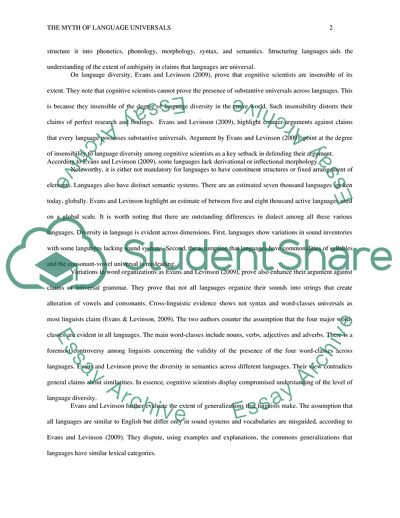Cite this document
(A Response to an Article The Myth of Language Universals by Evans and Essay Example | Topics and Well Written Essays - 2500 words, n.d.)
A Response to an Article The Myth of Language Universals by Evans and Essay Example | Topics and Well Written Essays - 2500 words. https://studentshare.org/humanitarian/1815596-a-response-to-an-article-the-myth-of-language-universals-by-evans-and-levinson-2009
A Response to an Article The Myth of Language Universals by Evans and Essay Example | Topics and Well Written Essays - 2500 words. https://studentshare.org/humanitarian/1815596-a-response-to-an-article-the-myth-of-language-universals-by-evans-and-levinson-2009
(A Response to an Article The Myth of Language Universals by Evans and Essay Example | Topics and Well Written Essays - 2500 Words)
A Response to an Article The Myth of Language Universals by Evans and Essay Example | Topics and Well Written Essays - 2500 Words. https://studentshare.org/humanitarian/1815596-a-response-to-an-article-the-myth-of-language-universals-by-evans-and-levinson-2009.
A Response to an Article The Myth of Language Universals by Evans and Essay Example | Topics and Well Written Essays - 2500 Words. https://studentshare.org/humanitarian/1815596-a-response-to-an-article-the-myth-of-language-universals-by-evans-and-levinson-2009.
“A Response to an Article The Myth of Language Universals by Evans and Essay Example | Topics and Well Written Essays - 2500 Words”. https://studentshare.org/humanitarian/1815596-a-response-to-an-article-the-myth-of-language-universals-by-evans-and-levinson-2009.


